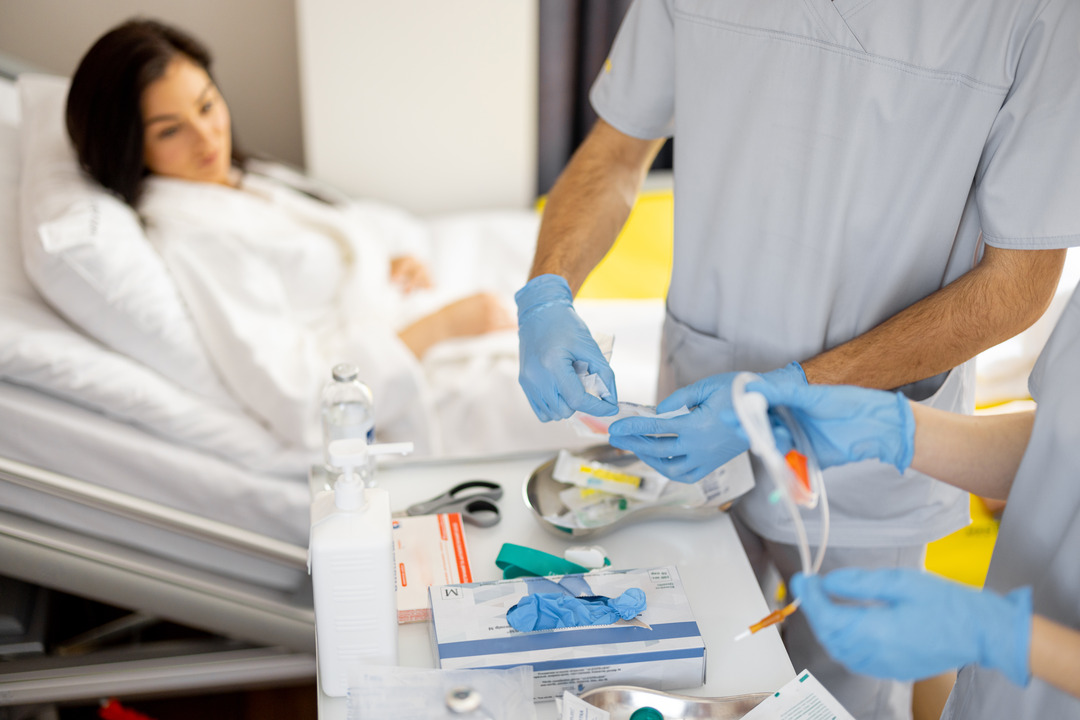CNA – Witnessing the slow decay and ultimate loss of one’s hands and feet to a relentless bacterial infection is a harrowing ordeal. For a 37-year-old Malaysian beautician, this nightmare became a grim reality.
Faced with the ominous choice between immediate amputation to halt the spread of destruction or risking a fatal outcome, she underwent the painful procedure, ultimately losing all four limbs.
The costly toll of her battle extended beyond physical loss, amounting to over SGD300,000 in medical expenses, according to Lianhe Zaobao.
Lin Ai Ling, who had been residing in Singapore since 2016, initially dismissed her symptoms of fever, stomachache, and overall weakness in October 2023 as signs of food poisoning. Seeking medical attention, she was prescribed medication when her condition showed no improvement after two days.
Concerned by persistent symptoms, she returned to the doctor, who advised immediate hospitalisation.
“After that, I just lost consciousness,” she recounted to the newspaper.
Upon regaining consciousness, Lin faced a grim reality: her heartbeat was weak, and insufficient oxygen had reached her brain.
Medical intervention managed to stabilise her heart’s blood circulation and preserve brain function, yet the damage had already spread irreversibly to her extremities.
“I watched helplessly as my hands and feet turned black and became heavier until the process spiralled out of control,” she said. Eventually, Lin had to make the painful decision to amputate her hands in November 2023 and her feet the following month.
It was not disclosed in the article what had started Lin’s bacterial infection and how she might have contracted it. However, it was reported that the doctor had found a hole in her large intestine during her hospitalisation. She was medically discharged in January 2024 and is today, learning to live with prosthetic legs while raising funds for her prosthetic hands.

WHAT COULD HAVE HAPPENED?
Normally, the body’s immune system kicks in when it detects pathogens such as bacteria and viruses.
“In response to the infecting pathogen, chemicals known as cytokines are released by the body to fight infection,” explained Dr Shawn Vasoo, the clinical director of National Centre for Infectious Diseases.
While helpful, this response may also be “dysregulated, and lead to organ injury and a drop in blood pressure”, he said, leading to what is known as sepsis, an extreme immune response to an infection.
Sepsis is a subset of the most common but also, the most severe bacterial infections, said Dr Vasoo, citing urinary tract infections (UTIs), pneumonia, and skin and soft tissue infections as other common bacterial infections.
In severe sepsis, organ dysfunction and failure may occur. For instance, there may be acute respiratory distress; cardiac, liver or kidney injury; or shock from the low blood pressure, he said.
“This diminished blood supply may be even more pronounced when medications called vasoconstrictors are given to support blood pressure to vital organs,” said Dr Vasoo.
While life supporting, the same medication may diminish blood flow to the body’s extremities such as the arms and legs, he said.
The fall in blood pressure may also happen with “certain infections that lead to abnormal clotting in the blood stream”, said Dr Vasoo, “which could lead to diminished blood flow to the organs or extremities such as the arms or legs”.
HOW DOES IT HAPPEN?
While Lin did not say how she got infected, it doesn’t take much for bacteria to enter the body and wreak havoc.
“Generally, people can contract bacterial infections through the direct invasion of bacteria into vulnerable organs,” said senior consultant Dr Nares Smitasin from National University Hospital’s Department of Medicine, Division of Infectious Diseases.
“For instance, bacteria can enter through a cut in the skin and cause an infection, such as a boil. Ingesting food contaminated with bacteria can lead to intestinal infection and diarrhoea,” he said.
Bacteria is also everywhere, even in us.
“Humans have bacteria in their stomach and intestines that aid in digestion and produce certain vitamins. There are also bacteria on our skin, inside our noses and mouths, where they exist as commensal organisms,” said Dr Nares.
Two, infections can arise when there is “compromised organ function or integrity” that allows bacteria to invade.
And sometimes, no clear source is identified, said Dr Vasoo, “possibly because the initial site of infection was seemingly minor or unnoticed”.

ARE YOU AT RISK?
While the incidence of sepsis in Singapore is unknown, infections such as pneumonia and UTIs accounted for more than 5,000 deaths in 2021, which make up about 20 per cent of the total number of deaths, noted Annals.
Very young and elderly individuals as well as those who are immuno-compromised or have chronic conditions such as diabetes and cancer may run a higher risk than others of developing sepsis, said Dr Nares.
“Patients with diabetes mellitus are more prone to bacterial foot infections due to poor circulation and nerve damage caused by the disease. Patients receiving chemotherapy may have cell damage in the intestines, leading to bacterial invasion from the intestines into the bloodstream,” he said.
Sepsis may also occur when a bacterial pneumonia sets in after a viral infection such as influenza or COVID-19, said Dr Vasoo.
“Thus, it is important to see your doctor and keep all your vaccines, especially influenza, COVID-19 and pneumococcal, up to date.”
WHAT ARE THE SIGNS OF SEPSIS?
Early-stage symptoms, said Dr Vasoo, include high fever, chills and shakes with a high heart rate. The patient may appear flushed, confused and, “in the late stage of the disease, have low blood pressure or a blotchy or purplish rash”.
Other common signs of sepsis, said Dr Nares, include a rapid respiratory rate and drowsiness. “Should these symptoms arise in a patient with an infection, it is crucial to seek immediate medical attention.”
WHY ARE THE HANDS AND FEET AFFECTED?
“When a patient develops sepsis, the body prioritises vital organs like the brain and heart by redirecting blood to the central part of the body,” said Dr Nares.
Limbs are especially vulnerable as the body tends to conserve blood supply to the vital organs first, said Dr Vasoo, and constricts blood vessels to the extremities such as the arms and legs to preserve blood pressure during septic shock. “This is part of the body’s defence mechanism,” he said.
WHY IS AMPUTATION NECESSARY?
To save the patient’s life. When the limbs die or become gangrenous due to ischaemia (when blood flow and oxygen are restricted or reduced), they cannot be salvaged and may also become infected, said Dr Vasoo. “Because they are gangrenous and no longer viable, an amputation has to be performed.”
Dr Nares noted that “in certain cases, surgery may be required to remove the source of the bacterial infection as waiting for the antibiotics to take effect might be too late”.
“Amputation is typically performed when a limb has suffered an overwhelming infection that can no longer be effectively treated with antibiotics,” he said.


